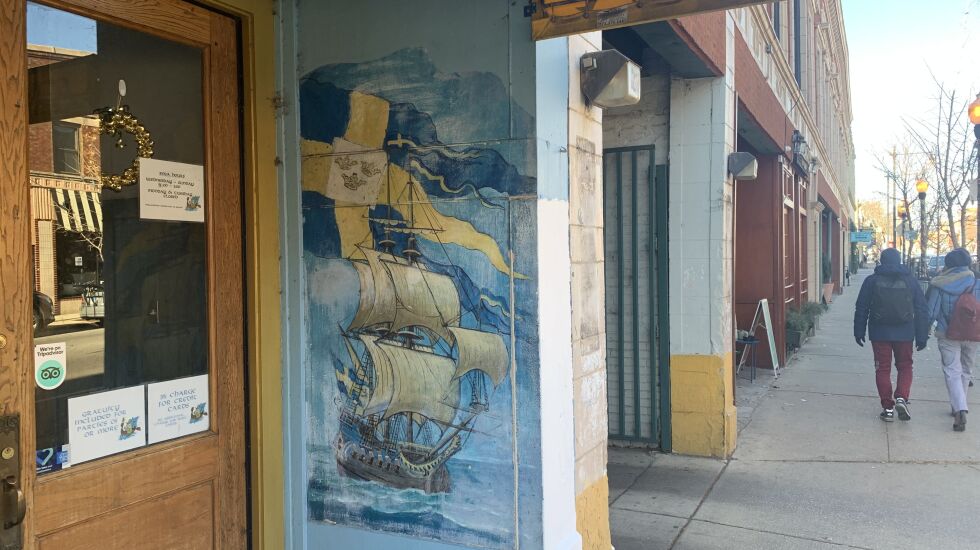
The ship that’s portrayed outside the Swedish restaurant at 5236 N. Clark St. is the Vasa, according to SVEA owner Scott Martin.
Built in the 17th century, the craft had a storied, though brief, history.
According to Encyclopedia Britannica, “While the Thirty Years’ War was raging in Europe, King Gustavus Adolphus of Sweden realized he needed a stronger naval presence if he were to retain his dominance in the Baltic.
“He ordered five heavy-duty warships to be built. The Vasa, with two gun-decks, 64 bronze cannons and a 450-man crew, was to be a mighty vessel; each broadside was capable of hurling some 250 kg (550 lb.) of shot, which was twice as much as the most powerful European ships of her day.”
Spanning 220 feet, the Vasa “was a vast, beautifully decorated ship” that included expansive carvings, according to Smithsonian Magazine.
But the ship didn’t last long. It keeled and sank just minutes after being launched in 1628.
“A small gust filled the sails, and the ship heeled to port, but slowly, agonizingly recovered,” according to an account on the website of the Vasa Museum in Stockholm. “As the ship passed the gap in the bluffs at Tegelviken, a much stronger gust pushed the ship so far over on its port side that water poured in through the open gunports on the lower gundeck. Vasa began to sink.
“Within minutes, the ship was on the sea bed at a depth of 32 metres.”
The ship was raised from the sea in 1961 and now is displayed — in remarkably good condition — at the museum.

The SVEA painting was done in 1988 by artist Lars Gillis, according to Martin, whose business is one of the few Swedish institutions left in a North Side neighborhood once teeming with Swedes.
Emailed a photo of the mural, Vasa Museum spokeswoman Martina Siegrist Larsson says, “The painting does not look exactly like Vasa, but it has some Vasa-like features, for example the figurehead lion. Considering the context (a Swedish restaurant in the U.S.), it seems likely that the mural shows Vasa since it is the most well-known Swedish warship of all times.”
Beside housing the ship itself, the museum also has a scale model that looks “quite similar” to the ship in the Andersonville mural, Larsson says.
“Our model is red, not blue like the mural, but earlier (before 1990) it was believed that Vasa was partly painted in blue,” she says. “Research performed during 1990-2002 gave us new information and since then we know that it was painted in red.”
According to Fred Hocker, the museum’s research director, “There have been many theories about why the ship sank, but the explanation given by the panel of experts at the inquest in September 1628 turns out to be accurate.
“They concluded that the mass in the ship was poorly distributed, that the upper part of the hull was too tall and too heavy for the amount of ship which is in the water,” according to Hocker. “As one said, the ship does not have enough ‘belly.’ Vasa is unusually tall above the waterline, compared to its width, and the deck structure is very heavily built, out of oversized timbers spaced very closely together.”
The center of gravity was “too high, which makes the ship unstable.”
The Vasa was back in the news this fall as it was disclosed that one of its sister ships, the Applet, had been discovered under water hundreds of years after it was purposely sunk to help create an artificial barrier to help guard Sweden against invasion from sea.
The Chicago area also has several other nautical-themed murals, including one from the 1930s, titled “History of Ships,” that portrays the evolution of shipbuilding and is on display at the Chicago Maritime Museum in Bridgeport.

Commissioned in 1936 for Lawson Elementary School in North Lawndale, it was one of several New Deal-era murals done by artist Gustaf Dalstrom, who was born in Sweden.







